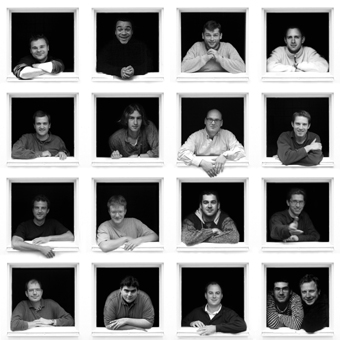Today in class, we listened to two video recordings of Gagarará by Spanish composer
Brian Martínez. This composition was the winning entry for the 2012 Isla Verde Bronces Festival in Argentina. The work is inspired by the chants of the Santero Carnival Festivities, and includes a haunting trumpet solo at the beginning and the end, an intensifying layering of poly-rhythms, and a primitive aesthetic and harmonies inspired by Stravinsky.
The premiere recording below was made in 2012 and the personnel included: Trumpets: Ron Rom, Paul Archibauld, Juan Pablo Mayor, Agustina Guidoli and Ivan Chunga; Horns: Frank Lloyd, César Ahumada; Trombones: Jacque Mauger, Carlos Ovejero, Ivan Barrios and Tuba: John Manning
Brian Martínez. This composition was the winning entry for the 2012 Isla Verde Bronces Festival in Argentina. The work is inspired by the chants of the Santero Carnival Festivities, and includes a haunting trumpet solo at the beginning and the end, an intensifying layering of poly-rhythms, and a primitive aesthetic and harmonies inspired by Stravinsky.
The premiere recording below was made in 2012 and the personnel included: Trumpets: Ron Rom, Paul Archibauld, Juan Pablo Mayor, Agustina Guidoli and Ivan Chunga; Horns: Frank Lloyd, César Ahumada; Trombones: Jacque Mauger, Carlos Ovejero, Ivan Barrios and Tuba: John Manning
The U.S. premier occured later that year at the Massachusetts Institute of Technology during the Atlantic Brass Quintet Seminar. Members of the Triton Brass Quintet and the Atlantic Brass Quintet combine to form the Tritanic Brass Ensemble. The personnel included: Trumpets: Stephen Banzaert, Andrew Sorg, Louis Hanzlik, David Wharton; Horns: Shelagh Abate, Seth Orgel; Trombones: Tim Albright, Wes Hopper, Angel Subero and Tuba: John Manning







